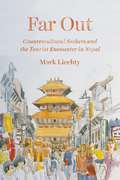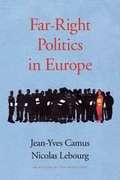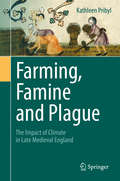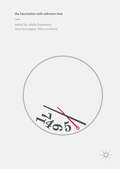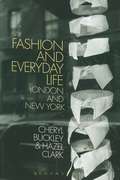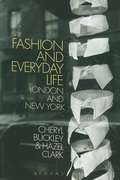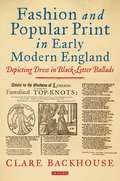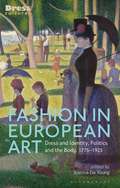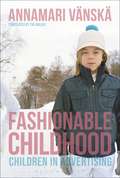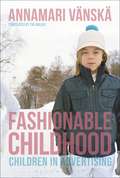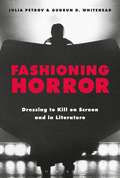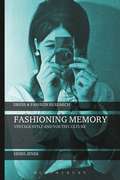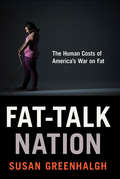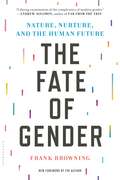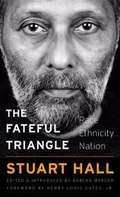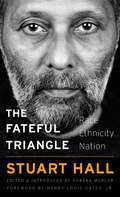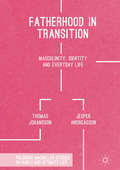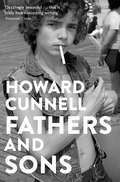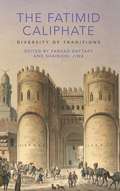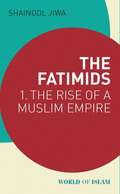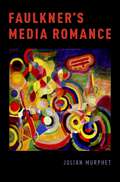- Table View
- List View
Far Out: Countercultural Seekers and the Tourist Encounter in Nepal
by Mark LiechtyWesterners have long imagined the Himalayas as the world’s last untouched place and a repository of redemptive power and wisdom. Beatniks, hippie seekers, spiritual tourists, mountain climbers—diverse groups of people have traveled there over the years, searching for their own personal Shangri-La. In Far Out, Mark Liechty traces the Western fantasies that captured the imagination of tourists in the decades after World War II, asking how the idea of Nepal shaped the everyday cross-cultural interactions that it made possible. Emerging from centuries of political isolation but eager to engage the world, Nepalis struggled to make sense of the hordes of exotic, enthusiastic foreigners. They quickly embraced the phenomenon, however, and harnessed it to their own ends by building tourists’ fantasies into their national image and crafting Nepal as a premier tourist destination. Liechty describes three distinct phases: the postwar era, when the country provided a Raj-like throwback experience for rich Americans; Nepal’s emergence as an exotic outpost of hippie counterculture in the 1960s; and its rebranding into a hip adventure destination, which began in the 1970s and continues today. He shows how Western projections of Nepal as an isolated place inspired creative enterprises and, paradoxically, allowed locals to participate in the global economy. Based on twenty-five years of research, Far Out blends ethnographic analysis, a lifelong passion for Nepal, and a touch of humor to produce the first comprehensive history of what tourists looked for—and found—on the road to Kathmandu.
Far Out: Countercultural Seekers and the Tourist Encounter in Nepal
by Mark LiechtyWesterners have long imagined the Himalayas as the world’s last untouched place and a repository of redemptive power and wisdom. Beatniks, hippie seekers, spiritual tourists, mountain climbers—diverse groups of people have traveled there over the years, searching for their own personal Shangri-La. In Far Out, Mark Liechty traces the Western fantasies that captured the imagination of tourists in the decades after World War II, asking how the idea of Nepal shaped the everyday cross-cultural interactions that it made possible. Emerging from centuries of political isolation but eager to engage the world, Nepalis struggled to make sense of the hordes of exotic, enthusiastic foreigners. They quickly embraced the phenomenon, however, and harnessed it to their own ends by building tourists’ fantasies into their national image and crafting Nepal as a premier tourist destination. Liechty describes three distinct phases: the postwar era, when the country provided a Raj-like throwback experience for rich Americans; Nepal’s emergence as an exotic outpost of hippie counterculture in the 1960s; and its rebranding into a hip adventure destination, which began in the 1970s and continues today. He shows how Western projections of Nepal as an isolated place inspired creative enterprises and, paradoxically, allowed locals to participate in the global economy. Based on twenty-five years of research, Far Out blends ethnographic analysis, a lifelong passion for Nepal, and a touch of humor to produce the first comprehensive history of what tourists looked for—and found—on the road to Kathmandu.
Far-Right Politics in Europe
by Jean-Yves CamusJean-Yves Camus and Nicolas Lebourg’s critical look at the far right throughout Europe reveals a prehistory and politics more complex than the stereotypes suggest and warns of the challenges it poses to the EU’s liberal-democratic order. These movements are determined to gain power through legitimate electoral means, and they are succeeding.
Far-Right Politics in Europe
by Jean-Yves CamusJean-Yves Camus and Nicolas Lebourg’s critical look at the far right throughout Europe reveals a prehistory and politics more complex than the stereotypes suggest and warns of the challenges it poses to the EU’s liberal-democratic order. These movements are determined to gain power through legitimate electoral means, and they are succeeding.
Farming, Famine and Plague: The Impact of Climate in Late Medieval England
by Kathleen PribylThis book is situated at the cross-roads of environmental, agricultural and economic history and climate science. It investigates the climatic background for the two most significant risk factors for life in the crisis-prone England of the Later Middle Ages: subsistence crisis and plague. Based on documentary data from eastern England, the late medieval growing season temperature is reconstructed and the late summer precipitation of that period indexed. Using these data, and drawing together various other regional (proxy) data and a wide variety of contemporary documentary sources, the impact of climatic variability and extremes on agriculture, society and health are assessed. Vulnerability and resilience changed over time: before the population loss in the Great Pestilence in the mid-fourteenth century meteorological factors contributing to subsistence crises were the main threat to the English people, after the arrival of Yersinia pestis it was the weather conditions that faciliated the formation of recurrent major plague outbreaks.Agriculture and harvest success in late medieval England were inextricably linked to both short term weather extremes and longer term climatic fluctuations. In this respect the climatic transition period in the Late Middle Ages (c. 1250-1450) is particularly important since the broadly favourable conditions for grain cultivation during the Medieval Climate Optimum gave way to the Little Ice Age, when agriculture was faced with many more challenges; the fourteenth century in particular was marked by high levels of climatic variability.
The Fascination with Unknown Time
by Sibylle Baumbach Lena Henningsen Klaus OschemaThis volume explores 'unknown time' as a cultural phenomenon, approaching past futures, unknown presents, and future pasts through a broad range of different disciplines, media, and contexts. As a phenomenon that is both elusive and fundamentally inaccessible, time is a key object of fascination. Throughout the ages, different cultures have been deeply engaged in various attempts to fill or make time by developing strategies to familiarize unknown time and to materialize and control past, present, or future time. Arguing for the perennial interest in time, especially in the unknown and unattainable dimension of the future, the contributions explore premodern ideas about eschatology and secular future, historical configurations of the perception of time and acceleration in fin-de-siècle Germany and contemporary Lagos, the formation of ‘deep time’ and ‘timelessness’ in paleontology and ethnographic museums, and the representation of time—past, present, and future alike—in music, film, and science fiction.
The Fascination with Unknown Time
by Sibylle Baumbach Lena Henningsen Klaus OschemaThis volume explores 'unknown time' as a cultural phenomenon, approaching past futures, unknown presents, and future pasts through a broad range of different disciplines, media, and contexts. As a phenomenon that is both elusive and fundamentally inaccessible, time is a key object of fascination. Throughout the ages, different cultures have been deeply engaged in various attempts to fill or make time by developing strategies to familiarize unknown time and to materialize and control past, present, or future time. Arguing for the perennial interest in time, especially in the unknown and unattainable dimension of the future, the contributions explore premodern ideas about eschatology and secular future, historical configurations of the perception of time and acceleration in fin-de-siècle Germany and contemporary Lagos, the formation of ‘deep time’ and ‘timelessness’ in paleontology and ethnographic museums, and the representation of time—past, present, and future alike—in music, film, and science fiction.
Fashion and Everyday Life: London and New York
by Cheryl Buckley Hazel ClarkTaking cultural theorist Michel de Certeau's notion of 'the everyday' as a critical starting point, this book considers how fashion shapes and is shaped by everyday life. Looking historically for the imprint of fashion within everyday routines such as going to work or shopping, or in leisure activities like dancing, the book identifies the 'fashion system of the ordinary', in which clothing has a distinct role in the making of self and identity. Exploring the period from 1890 to 2010, the study is located in London and New York, cities that emerged as as socially, ethnically and culturally diverse, as well as increasingly fashionable. The book re-focuses fashion discourse away from well-trodden, power-laden dynamics, towards a re-evaluation of time, memory, and above all history, and their relationship to fashion and everyday life. The importance of place and space - and issues of gender, race and social class - provides the broader framework, revealing fashion as both routine and exceptional, and as an increasingly significant part of urban life. By focusing on key themes such as clothing the city, what is worn on the streets, the imagining and performing of multiple identities by dressing up and down, going out, and showing off, Fashion and Everyday Life makes a unique contribution to the literature of fashion studies, fashion history, cultural studies, and beyond.
Fashion and Everyday Life: London and New York
by Cheryl Buckley Dr Hazel ClarkTaking cultural theorist Michel de Certeau's notion of 'the everyday' as a critical starting point, this book considers how fashion shapes and is shaped by everyday life. Looking historically for the imprint of fashion within everyday routines such as going to work or shopping, or in leisure activities like dancing, the book identifies the 'fashion system of the ordinary', in which clothing has a distinct role in the making of self and identity. Exploring the period from 1890 to 2010, the study is located in London and New York, cities that emerged as as socially, ethnically and culturally diverse, as well as increasingly fashionable. The book re-focuses fashion discourse away from well-trodden, power-laden dynamics, towards a re-evaluation of time, memory, and above all history, and their relationship to fashion and everyday life. The importance of place and space - and issues of gender, race and social class - provides the broader framework, revealing fashion as both routine and exceptional, and as an increasingly significant part of urban life. By focusing on key themes such as clothing the city, what is worn on the streets, the imagining and performing of multiple identities by dressing up and down, going out, and showing off, Fashion and Everyday Life makes a unique contribution to the literature of fashion studies, fashion history, cultural studies, and beyond.
Fashion and Popular Print in Early Modern England: Depicting Dress in Black-Letter Ballads (Dress Cultures Ser.)
by Clare BackhouseFashion featured in black-letter broadside ballads over a hundred years before fashion magazines appeared in England. In the seventeenth century, these single-sheet prints contained rhyming song texts and woodcut pictures, accessible to almost everyone in the country. Dress was a popular subject for ballads, as well as being a commodity with close material and cultural connections to them. This book analyses how the distinctive words and images of these ballads made meaning, both in relation to each other on the ballad sheet and in response to contemporary national events, sumptuary legislation, religious practice, economic theory, the visual arts and literature. In this context, Clare Backhouse argues, seventeenth-century ballads increasingly celebrated the proliferation of print and fashionable dress, envisioning new roles for men and women in terms of fashion consumption and its importance to national prosperity. The book demonstrates how the hitherto overlooked but extensive source material that these ballads offer can enrich the histories of dress, art and culture in early modern England.
Fashion in European Art: Dress and Identity, Politics and the Body, 1775-1925 (Dress Cultures)
by Justine De YoungFashion reveals not only who we are, but whom we aspire to be. From 1775 to 1925, artists in Europe were especially attuned to the gaps between appearance and reality, participating in and often critiquing the making of the self and the image. Reading their portrayals of modern life with an eye to fashion and dress reveals a world of complex calculations and subtle signals. Extensively illustrated, Fashion in European Art explores the significance of historical dress over this period of upheaval, as well as the lived experience of dress and its representation. Drawing on visual sources that extend from paintings and photographs to fashion plates, caricatures and advertisements, the expert contributors consider how artists and their sitters engaged with the fashion and culture of their times. They explore the politics of dress, its inspirations and the reactions it provoked, as well as the many meanings of fashion in European art, revealing its importance in understanding modernity itself.
Fashionable Childhood: Children in Advertising
by Annamari Vänskä Eva MalkkiFashionable Childhood is the first book to critically examine representations of children and childhood through fashion media. Focussing on themes such as innocence, sexuality, class, and gender, this book provides a detailed and fascinating overview of the topic over the last 40 years. With case studies of advertising campaigns from international fashion brands such as Calvin Klein, Dior, Ralph Lauren and in-depth research into Italy's special edition of Vogue dedicated to childrenswear, Vogue Bambini, Fashionable Childhood examines the ways children's fashion is presented globally. With the market for children's fashion witnessing rapid growth in recent years, this exciting book will be of particular interest and value to students of fashion marketing, promotion, journalism, history, and theory.
Fashionable Childhood: Children in Advertising
by Annamari VänskäFashionable Childhood is the first book to critically examine representations of children and childhood through fashion media. Focussing on themes such as innocence, sexuality, class, and gender, this book provides a detailed and fascinating overview of the topic over the last 40 years. With case studies of advertising campaigns from international fashion brands such as Calvin Klein, Dior, Ralph Lauren and in-depth research into Italy's special edition of Vogue dedicated to childrenswear, Vogue Bambini, Fashionable Childhood examines the ways children's fashion is presented globally. With the market for children's fashion witnessing rapid growth in recent years, this exciting book will be of particular interest and value to students of fashion marketing, promotion, journalism, history, and theory.
Fashioning Horror: Dressing to Kill on Screen and in Literature
by Julia Petrov Gudrun D. WhiteheadFrom Jack the Ripper to Frankenstein, Halloween customs to Alexander McQueen collections, Fashioning Horror examines how terror is fashioned visually, symbolically, and materially through fashion and costume, in literature, film, and real life.With a series of case studies that range from sensationalist cinema and Slasher films to true crime and nineteenth-century literature, the volume investigates the central importance of clothing to the horror genre, and broadens our understanding of both material and popular culture. Arguing that dress is fundamental to our understanding of character and setting within horror, the chapters also reveal how the grotesque and horrific is at the center of fashion itself, with its potential for instability, disguise, and carnivalesque subversion. Packed with original research, and bringing together a range of international scholars, the book is the first to thoroughly examine the aesthetics of terror and the role of fashion in the construction of horror.
Fashioning Horror: Dressing to Kill on Screen and in Literature
by Julia Petrov Gudrun D. WhiteheadFrom Jack the Ripper to Frankenstein, Halloween customs to Alexander McQueen collections, Fashioning Horror examines how terror is fashioned visually, symbolically, and materially through fashion and costume, in literature, film, and real life.With a series of case studies that range from sensationalist cinema and Slasher films to true crime and nineteenth-century literature, the volume investigates the central importance of clothing to the horror genre, and broadens our understanding of both material and popular culture. Arguing that dress is fundamental to our understanding of character and setting within horror, the chapters also reveal how the grotesque and horrific is at the center of fashion itself, with its potential for instability, disguise, and carnivalesque subversion. Packed with original research, and bringing together a range of international scholars, the book is the first to thoroughly examine the aesthetics of terror and the role of fashion in the construction of horror.
Fashioning Memory: Vintage Style and Youth Culture (Dress and Fashion Research)
by Heike JenssThe valuing of old clothes as “vintage” and the recollection of the sartorial past, whether through second-hand consumption or the wearing of new old-fashioned clothes, has become a widespread phenomenon. This book illuminates sartorial and bodily engagements with memory and time through the temporal and nostalgic potency of fashion, and what this means for contemporary wearers.Based on in-depth ethnographic research including participant observation and interviews with sixties enthusiasts in Germany, who relocate British mod style into the twenty-first century, Jenss examines the practices and experiences that are part of the sartorial remembering of “the sixties,” from hunting flea markets and eBay, to the affect of material and mediated memories on vintage wearers.Jenss offers unique insights into the fashioning of time, cultural memory, and modernity, tracing the history and current appeal of vintage in fashion and youth culture, and asking: what kind of experiences of temporality and memory are enacted through fashion? How have evaluations of second-hand clothes shifted in the twentieth century? Fashioning Memory provides a unique insight into the diverse use of fashion as a memory mode and asks how style is remembered, performed, transformed, and reinvested across time, place, and generation.
Fat-Talk Nation: The Human Costs of America’s War on Fat
by Susan GreenhalghIn recent decades, America has been waging a veritable war on fat in which not just public health authorities, but every sector of society is engaged in constant "fat talk" aimed at educating, badgering, and ridiculing heavy people into shedding pounds. We hear a great deal about the dangers of fatness to the nation, but little about the dangers of today’s epidemic of fat talk to individuals and society at large. The human trauma caused by the war on fat is disturbing—and it is virtually unknown. How do those who do not fit the "ideal" body type feel being the object of abuse, discrimination, and even revulsion? How do people feel being told they are a burden on the healthcare system for having a BMI outside what is deemed—with little solid scientific evidence—"healthy"? How do young people, already prone to self-doubt about their bodies, withstand the daily assault on their body type and sense of self-worth? In Fat-Talk Nation, Susan Greenhalgh tells the story of today’s fight against excess pounds by giving young people, the campaign’s main target, an opportunity to speak about experiences that have long lain hidden in silence and shame. Featuring forty-five autobiographical narratives of personal struggles with diet, weight, "bad BMIs," and eating disorders, Fat-Talk Nation shows how the war on fat has produced a generation of young people who are obsessed with their bodies and whose most fundamental sense of self comes from their size. It reveals that regardless of their weight, many people feel miserable about their bodies, and almost no one is able to lose weight and keep it off. Greenhalgh argues that attempts to rescue America from obesity-induced national decline are damaging the bodily and emotional health of young people and disrupting families and intimate relationships. Fatness today is not primarily about health, Greenhalgh asserts; more fundamentally, it is about morality and political inclusion/exclusion or citizenship. To unpack the complexity of fat politics today, Greenhalgh introduces a cluster of terms—biocitizen, biomyth, biopedagogy, bioabuse, biocop, and fat personhood—and shows how they work together to produce such deep investments in the attainment of the thin, fit body. These concepts, which constitute a theory of the workings of our biocitizenship culture, offer powerful tools for understanding how obesity has come to remake who we are as a nation, and how we might work to reverse course for the next generation.
The Fate of Gender: Nature, Nurture, and the Human Future
by Frank BrowningFrank Browning takes us into human gender geographies around the world, from gender-neutral kindergartens in Chicago and Oslo to women's masturbation classes in Shanghai, from conservative Catholics in Paris fearful of God and Nature to transsexual Mormon parents in Utah. As he shares specific and engaging human stories, he also elucidates the neuroscience that distinguishes male and female biology, shows us how all parents' brains change during the first weeks of parenthood, and finally how men's and women's responses to age differ worldwide based not on biology but on their earlier life habits. Starting with Simone de Beauvoir's world-famous observation that one is not born a woman but instead becomes a woman, Browning goes on to show equally that no one is born a man but learns how to perform as a man, and that there is no fixed way of being masculine or feminine. Increasingly, the categories of "male" and "female" and even "gay" and "straight" seem old-fashioned and reductive. Just visible on the horizon is a world of gender and sexual fluidity that will remake our world in fundamental ways. Linking science to culture and behavior, and delving into the lives of individuals challenging historic notions, Browning questions the traditional division of Nature vs. Nurture in everything from plant science to sexual expression, arguing in the end that life consists of an endless waltz between these two ancient notions.
The Fateful Triangle: Race, Ethnicity, Nation (The\w. E. B. Du Bois Lectures #19)
by Stuart HallIn this work drawn from lectures delivered in 1994 a founding figure of cultural studies reflects on the divisive, deadly consequences of our politics of identification. Stuart Hall untangles the power relations that permeate race, ethnicity, and nationhood and shows how oppressed groups broke apart old hierarchies of difference in Western culture.
The Fateful Triangle: Race, Ethnicity, Nation (The\w. E. B. Du Bois Lectures #19)
by Stuart HallIn this work drawn from lectures delivered in 1994 a founding figure of cultural studies reflects on the divisive, deadly consequences of our politics of identification. Stuart Hall untangles the power relations that permeate race, ethnicity, and nationhood and shows how oppressed groups broke apart old hierarchies of difference in Western culture.
Fatherhood in Transition: Masculinity, Identity and Everyday Life (Palgrave Macmillan Studies in Family and Intimate Life)
by Thomas Johansson Jesper AndreassonThis book discusses and analyses the ways in which fatherhood is in transition in contemporary and globalized society. The authors identify and examine fathering practices in relation to hegemonic and marginal patterns of masculinity, the concept of heteronormativity and sexuality, and patterns of segregation, class and national differences. Contextualised in relation to theories of fatherhood and relevant statistics, Fatherhood in Transition presents rich empirical material gathered in a number of western countries. It focuses on key themes including transnational fathering and families, gay fathers and the virtual global arena of fatherhood images found on the internet. Containing a number of new discussions about masculinity and fatherhood, whilst contributing to and developing existing debates and theories about men, masculinity, gender and society, this book will be of interest to students and scholars across a range of disciplines, including Men’s Studies, Gender Studies, Sociology, Psychology, Media Studies and Cultural Studies.
Fathers and Sons
by Howard Cunnell‘There is so much aching love in this book, such pain and beauty. Behold, and rejoice.’ – Tim Winton, author of CloudstreetWas he thinking, do I have to be this kind of boy to survive? Is this what being a boy is?As a boy growing up on the south coast of England, Howard Cunnell’s sense of self was dominated by his father’s absence. Now, years later, he is a father, and his daughter is becoming his son.Starting with his own childhood in the Sussex beachlands, Howard tells the story of the years of self-destruction that defined his young adulthood and the escape he found in reading and the natural world. Still he felt compelled to destroy the relationships that mattered to him.Saved by love and responsibility, Cunnell charts his journey from anger to compassion, as his daughter Jay realizes he is a boy, and a son.Most of all, this is a story about love – its necessity and fragility, and its unequalled capacity to enable us to be who we are.Deeply thoughtful, searingly honest and exquisitely lyrical, Fathers and Sons is an exploration of fatherhood, masculinity, authenticity and family.
The Fatimid Caliphate: Diversity of Traditions (Ismaili Heritage #20161030)
by Farhad Daftary Shainool JiwaThe Fatimids ruled much of the Mediterranean world for over two centuries. From the conquest of Ifriqiya in 909 to defeat at the hands of Saladin in 1171, the Fatimid caliphate governed a broad area stretching, at its peak, from the Red Sea in the East to the Atlantic Ocean in the West. Their leaders - the Ismaili Shi?i Imam-caliphs - were notable for largely pursuing a policy of tolerance towards the various religious and ethnic communities of their realm, and they embraced diverse approaches to administering a vast empire. Such methods of negotiating government an diversity created a lasting pluralistic legacy. The present volume, edited by Farhad Daftary and Shainool Jiwa, brings together original contributions from a number of leading authorities in the field. Based on analyses of primary sources,the chapters shed fresh light on the impact of Fatimid rule. The book presents little-explored aspects of state-society relations such as the Fatimid model of the vizierate, Sunni legal responses to Fatimid traditions, and the role of women in prayer. Highlighting the distinctive nature of the Fatimid empire and its legacy, this book will be of special interest to researchers in medieval Islamic history and thought.
The Fatimids: 1 - The Rise of a Muslim Empire (World of Islam)
by Shainool JiwaEmerging from a period of long seclusion, in the year 909 the leader of the burgeoning community of Ismaili Shi'i Muslims was declared the first Fatimid Imam-caliph. Abd Allah al-Mahdi founded the only sustained Shi'i dynasty (909–1171) to rule over substantial parts of the medieval Muslim world, rivalling both the Umayyads of Spain and the Abbasids. At its peak, the Fatimid Empire extended from the Atlantic shores of North Africa, across the southern Mediterranean and down both sides of the Red Sea, covering also Mecca and Medina. This accessible history, the first of two volumes, tells the story of the birth and expansion of the Fatimid Empire in the tenth century. Drawing upon recently available eyewitness accounts, Shainool Jiwa introduces the first four generations of Fatimid Imam-caliphs - al-Mahdi, al-Qa'im, al-Mansur and al-Mu'izz - as well as the people who served them and those they struggled against. Readers are taken on a journey through the Fatimid capitals of Qayrawan, Mahdiyya and Mansuriyya and on to the founding of Cairo. In this lively and comprehensive introduction, we discover various milestones in Fatimid history and the political and cultural achievements that continue to resonate today.
Faulkner's Media Romance
by Julian MurphetThis book treats William Faulkner's major fiction--from Flags in the Dust through to Absalom, Absalom!--to a searching reappraisal under the spotlight of a media-historical inquiry. It proposes that Faulkner's inveterate attraction to the paradigms of romance was disciplined and masked by the recurrent use of metaphorical figures borrowed from the new media ecology. Faulkner dressed up his romance materials in the technological garb of radio, gramophony, photography, and cinema, along with the transportational networks of road and air that were being installed in the 1920s. His modernism emerges from a fraght but productive interplay between his anachronistic predilection for chivalric chichés and his extraordinarily knowledgeable interest in the most up-to-date media institutions and forms. Rather than see Faulkner as a divided author, who worked for money in the magazines and studios while producing his serious fiction in despite of their symbolic economies, this study demonstrates how profoundly his mature art was shot through with the figures and dynamics of the materials he publicly repudiated. The result is a richer and more nuanced understanding of the dialectics of his art.
